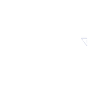Strategic alignment checklist
- Identify critical business locations
→ Where does the company need talent today? Where might that change in the next 12–24 months? - Clarify business objectives by location
→ Are the objectives focused on growth, stabilization, cost reduction, or something else? - Assess where talent currently resides vs. where it’s needed
→ Is the talent pipeline sufficient, or are mobility assignments needed to fill gaps? - Define appropriate assignment types
→ Are short-term, long-term, tax-equalized, permanent transfers, remote workers, or business travelers best suited for the business and employee needs? - Evaluate internal capabilities
→ Does your company have the people, policies, and systems in place to support the mobility volume and complexity? - Identify cross-functional stakeholders
→ Have you assembled a team consisting of tax, payroll, immigration, HR, finance, and legal to support program design and issue resolution?
Best practice: Proactively involving the right internal teams (and external vendors when needed) allows you to deploy talent quickly – avoiding delays, risk exposure, and last-minute costs.







